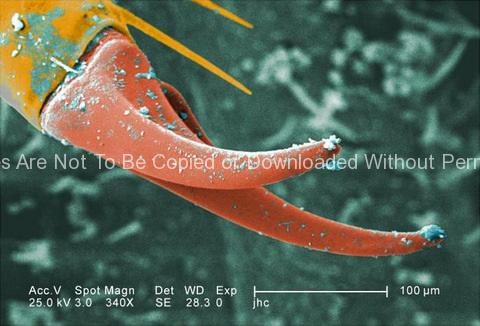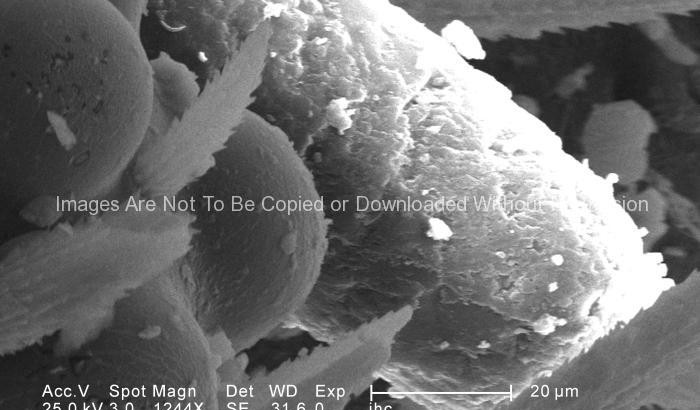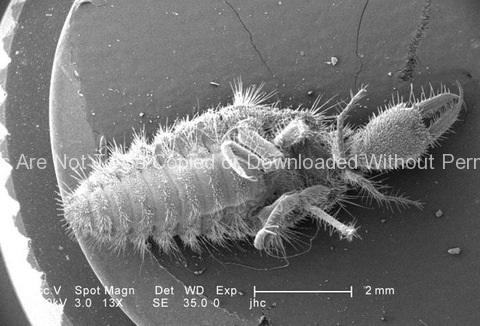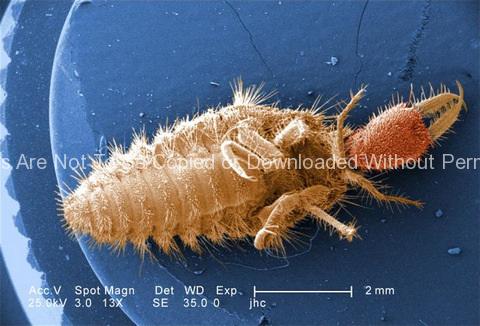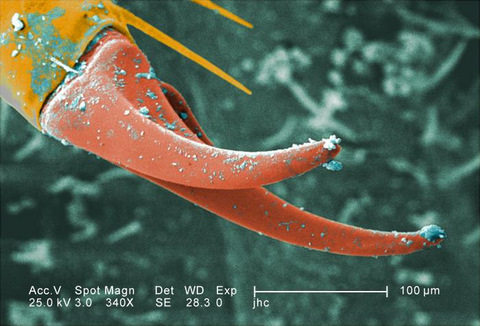
Under a moderate magnification of 340X, this digitally-colorized scanning electron micrograph (SEM) depicted the exoskeletal surface of a larval staged antlion, sometimes referred to as a “doodlebug”, because of the trails it leaves in the soft sand as it hunts for prey. This arthropod, i.e., jointed legs, undergoes dramatic morphologic changes when it metamorphoses into a beautiful flying antlion lacewing. In this particular view, the distal end of one of the larva’s extremities is highlighted, revealing the claw it uses to grasp objects it encounters in its environment, including sand.
